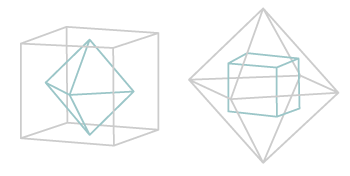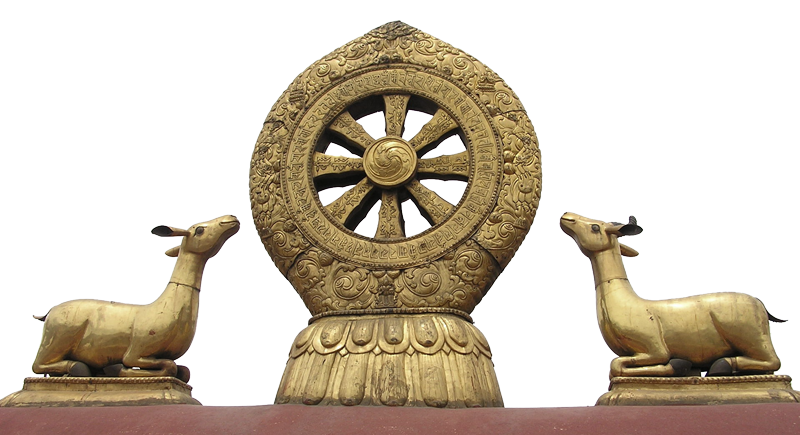Lunivernal calendar - Year 8 - "Law"
For comments on design elements, see the back side of the poster by clicking on the image above.
For more explanations on the concept and every specific part of the design elements see below.
8 semi-regular tessellations - Mosaics
The word mosaic comes from the word Muses (Ancient Greek: Μοῦσαι - nine Muses where figuring as personifications of knowledge and the arts). The word tessellation comes from Late Latin word tessella "small square stone or tile", diminutive of tessera "a cube or square of stone or wood" most likely from Greek tessera (number four).
Mosaic is a form of painting with great durability and duration over time and that is why it was named The Painting of Eternity.
Depending on the type of mosaic tiles, mosaics are classified as regular, semi-regular and non regular or irregular.
We call regular the mosaics that all their tiles have the same size and shape of a single, regular polygon. (A regular polygon has all sides and all angles equal). There are only three regular tessellations and they are those that consist of a grid of equilateral triangles, squares and hexagons.
Semi-regular mosaics consist of two or more regular polygons. These regular polygons are arranged in such a way that each vertex is identical, which means that each vertex is surrounded by the same polygons arranged in the same circular order. There are eight semi-regular tessellations consisting of different combinations of equilateral triangles, squares, hexagons, octagons and dodecahedrons.
Irregular mosaics are those in which there are no restrictions on the shapes used or their arrangement around vertices.
The background of the calendar poster is covered by one of the Eight Semi-regular Mosaics. It consists of the repetition of a combination of two octagons and a square (4.8.8.) with the following layout.

64 codons - The alphabet of life
Genes generally express their functional activity through the production of proteins, which are complex molecules responsible for most cell functions. Genes (DNA sequences) carry specific information to produce a functional protein.
Initially, the genetic information of a gene is replicated in messenger RNA (mRNA) that has a sequence that matches the DNA sequence of the gene, a process called transcription.
This messenger RNA molecule is then used to produce a corresponding amino acid sequence through a process called translation.
Each group of three nucleotides in the sequence is called a codon. Each codon corresponds to either one of the twenty possible amino acids in a protein or to a termination code that commands the termination of the synthesis of the amino acid sequence in the ribosome. There are a total of 64 codons and they are the biochemical "alphabet" of information transfer..

The genetic code
Through a DNA triplet (codon), the genetic information is transferred to the mRNA and then to the protein.
Octahedral group of symmetry - Platonic relationship
If we define the centers of the seats of a Platonic solid (a regular polyedron) as vertices of another polyhedron, this second polyhedron is also a Platonic solid. The number of seats of the first is equal to the number of vertices of the second and vice versa, while the number of their edges is the same. These two polyhedrons are called duals polyhedrons..
Of the five in total regular polyhedrons that exist, 4 are duals between each other in pairs and one with itself.
Dual polyhedrons share the same group of symmetry. The octahedron and the cube belong to the octahedral group of symmetry..

Cube & regular octahedron, Gaia & Air, have a platonic relationship!
The number eight of the sky - Solar analemma
A Solar Analemma is essentially the graph that is displayed when the Sun is photographed at the same time, every few days, with a camera that stays still and the shots are taken in a single photo frame, over the course of a year. Successive shots of the Sun in this single frame, form a dot figure of number 8.
This is because while the Earth's orbital velocity changes throughout the year, our clocks count the time in a base of an average velocity... They count an average time.

From Analemma graphs is arising that during a year the true speed coincides with the average one only 4 times: on December 26th, on April 16th, on June 14th and on September 2nd. On all other dates the true time is either longer or less than the mean time.
Pyxis. The sky compass.
Pyxis constellation was first introduced in 1763 and is counted among the 88 modern constellations designated in 1922 by the International Astronomical Union. It was formed by stars of the old constellation of Argo Navis and the original name was Pyxis Nautica, meaning the Navy Compass.
Argo Navis was the largest constellation and the only one of the 48 constellations designated by Claudius Ptolemy in his book Almagest in the 2nd century CE, that is no longer recognized as such by modern astronomy. Its name comes from the mythical Argo, the ship of the Argonaut Campaign, with which the 50 Argonauts travel in the Orpheus’ epic poem Argonautica. From that myth, in honor of the Argonauts' Campaign, took their name also the constellations of Lyra, Aries, Heracles, Gemini, Dragon and Sagittarius.
However, today, 3 independent Constellations that used to form Argo Navis are recognized: Carina - the keel of the ship, Vela - mast and sail of the ship, Puppis – the stern (the back) of the ship, as well as Pyxis which as we have seen was formed by stars of Vela.

The constellation of Carina is famous because it contains the star Kanopus, the second brightest star in the sky after Sirius. The former Argo Navis (or the current 4 constellations as above) along with Columba, Delphinus, Equuleus, Eridanus and Piscis Austrinus, make up the Heavenly Waters Family of constellations as they are projected on the Path of the Gods, at the level of the galaxy.
Eight-year Greek calendar - Venus - Olympics
263 repetitions of an 8 gram (see drawing below) constitute the meander that surrounds the annual calendar cycle.
The 263 days correspond to the number of days that Venus appears before sunrise (Lucifer = Light bearer) and the same long period that appears after sunset (Vesper = Evening Star).
The 263 days correspond to approximately 9 lunar months (265 days) which is the average human pregnancy cycle.
The 99 circles inside the meander correspond to the 99 lunar months that make up 8 solar tropical years.
The duration of 8 Earth years (2,922 days) is equal to the duration of 13 years of Venus* and within this period are taking place 5 conjunctions of Sun-Earth & Venus. From these 5 conjunctions arising the 5 cycles of the Olympic Games that were held every 49 and 50 lunar months alternately. That is, two Olympics every 5 conjunctions, or every 8 Earth years or every 13 Venusian years or 99 lunar months **.
The date for the Olympic Games was precisely defined as: The 8th (eighth) full moon after the first full moon, after the winter solstice.
That means: on the 2nd or 3rd full moon after the summer solstice during the month of Apollonios or Parthenios.

* At Cycladic frying pans (calendars based on Venus synodic period dated around 2700 BCE) Venus is depicted with an octagonal star.
** Numbers 5, 8 and 13 are consecutive members of the Fibonacci sequence.
Wind rose - The eight-pointed star of the horizons
The wind rose is the circular design on the maps and compasses, which defines the directions of the horizon, enriched with the names of the winds that blow from the respective points of the horizon.
Defining as main axis the vertical diameter of a circle corresponding to the direction North - South from top to bottom, and moving it rotationally with 4 steps at an angle of 45°, an octagonal star is formed. The 4 intermediate directions of the main cross formed by the axes North - South and East - West, are simply an additional division of the horizon into eight instead of only four directions. On the left the star has the West and on the right the East.
Early travelers of history, the Greeks, invented more complex wind roses, giving names of up to twelve different winds, especially since Aeolus, the "treasurer" of winds, (the one who invented the sails that move the ships and taught their use to the ancients) had 12 children: 6 sons and 6 daughters! But the division of the horizon into eight parts remained the most prevalent for orientation in the natural world internationally.
Below are the old Greek names of the 8 main winds (blowing from directions multiples of 45 degrees) and the corresponding common or Latin ones that prevailed in the Mediterranean during the Roman period.
|
Direction |
Greek |
Common - Latin |
|
N (000°) |
Aparktias |
Tramontana |
|
NE (045°) |
Meses |
Greco |
|
E (090°) |
Apeliotes |
Levante |
|
SE (135°) |
Eurus |
Scirocco |
|
S (180°) |
Notos |
Ostro |
|
SW (225°) |
Lips |
Libeccio |
|
W (270°) |
Zephyrus |
Ponente |
|
NW (315°) |
Sciron |
Maestro |
Of course, the winds, apart from the directions on the horizon, also get their names from their blowing in relation to the location and morphology of specific places.
Tramontana, for example, comes from the Latin trans - montanus, meaning "beyond the mountains", and refers to the Alps that for the Latins marks the north.
Similarly, the name Lips comes from the Hellenic word λυψ (= Libyan) which refers to the fact that the wind apparently blows from Libya (meaning for the ancient Greeks, not the present country but the whole Africa).
Ashtanga - The 8 steps of Yoga
Yoga is a system of physical, mental and psychological practices. The word yoga comes from yewg which in Sanskrit (ancient Indian) means connection, union. Conceptually, it describes the connection of the practitioner -through the achievement of self-control with the aim of harmony between body, emotion and mind- with his True Self, the inner Master.
Somewhere around the 5th pre-Christian century, Patanjali composed older unwritten traditions from the theory and practice of yoga in 196 aphorisms (a work known as Yoga Sutras). In this work he organized a clearly defined eight limbs form, Ashtanga yoga, which literally means "eight branches" (ashta = eight, anga = branch).
These 8 branches of yoga work as an 8-step code for ethical behavior and self-development. As a compass for a meaningful life and completeness. They are outlined as follows:
- YAMAS (5 social codes - Non-violence, Truth, Honesty, Non-possession, restraint)
- NIYAMAS (5 personal codes - Purity, Self-sufficiency, Severe treatment of the body, Self-observation, Scripture study, Contemplation of the divine.
- ASANA (stable, comfortable posture)
- PRANAYAMA (increase of energy through respiration)
- PRATYAHARA (withdrawal of the senses)
- DHARANA (concentration)
- DHYANA (meditation state)
- SAMADHI (liberalisation / enlightenment)
The first 4 are considered external stages, they have to do with the improvement of the personality, the dominance over the body and the development of True Self-awareness.
The next four (with the 5th being a transition from the outer field to the inner), deal with the senses, the thoughts and the attainment of a higher state of consciousness.

Statue of Patanjali
I Ching - 64 (26) tiles of an art of divination
The I Ching or Book of Changes is one of the classics of Chinese culture. At the heart of I Ching's philosophy is the concept of constant change and the existence of two opposing and alternating energies, Yin and Yang, that are the driving force of the world. The term I Ching is also translated as the Law of Change.
The symbolic content of I Ching includes a total of 64 hexagrams and each hexagram consists of two trigrams.

Trigrams are combinations of 3 one-piece or broken lines. Each one-piece line represents the Yang, the male principle, the positive pole, the unit, and each dashed line, the Yin, the female principle, the negative pole, the zero.
There are only 8 possible trigram combinations. The Eight Trigrams (in Chinese ba-gua --> ba = eight and gua = trigram) as a cosmological system contain the dualism expressed by the one-piece or dashed lines and the trinity in its manifestations as three-part structures of the 2 basic opposite elements. They correspond to fundamental elements of nature but also to the principles of reality as a structure of eight interrelated concepts.
In the drawing the oldest of the matching versions of trigrams and elements: the Ba Gua of the Early Heven that is presented in the calendar (there is also a later slightly different version: the Ba Gua of the Later Heaven).
Essentially, what appears in I Ching is the manifestation of dualism to the sixth power; its structural elements (yin & yang) are manifested first through the trinity as 8 (23) trigrams and then as 64 (26) hexagrams which is also the maximum of 8 trigrams combinations.
Each hexagram in the Book of Changes is accompanied by a general text and each separate line also has its own text. The texts have a poetic character with strong sence of symbolism and image creation while also capturing an ethical content. They reflect philosophical ideas, with the cornerstones being the alternation of Yin and Yang end the constant circular motion and change, while at the same time they provide a frame for the practice of the art of divination.
The most popular method of using the book to get an oracle, is to form a hexagram using 3 coins. We toss the coins 6 times, forming one line at a time...
Noble Eightfold path - The medicine of pain
The Noble Eightfold Path is the fourth of the Fourth of the Four Noble Truths of the Buddha. In his first speech, right after his enlightenment, the Buddha revealed to humanity the result of his spiritual pursuit. He referred to the Four Noble Truths: Pain, the Cause of Pain, the Elimination of Pain, and finally the Path that leads to the Elimination of Pain known as the Noble Eightfold Path.
The Eightfold Path refers to eight principles operating simultaneously rather than eight successive steps or stages. It was also named Middle Way. The eight principles are: Right Understanding, Right Intention, Right Speech, Right Action, Right Livelihood, Right Effort, Right Concentration and Right Mindfulness.
The Middle Way is the path of conscious living. Its foundation is awareness and the crown is true peace and joy. In Buddhist symbolism, it is often represented by the wheel of the dharma (dharmachakra), in which its eight rays represent the eight elements of the path.

Roof of Jokhang Temple, Lhasa, Tibet. The Buddha "turned the wheel of Dharma" in his first sermon, in the Sarnath Deer Grove (near Varanasi, India).


